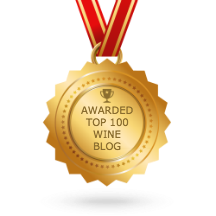Wine and the art of wine making has been part of human culture for eons. Indeed, archaeological evidence suggests that the earliest wine production came from sites in Georgia and Iran, dating from 6000 to 5000 BC. Evidence of the earliest European wine production has been uncovered at archaeological sites in Macedonia, dated to 6,500 years ago. Traces of wine dating from the second and first millennium BC have also been found in China. The history of people enjoying a good drop, therefore, stretches far into history, and far around the world.
Wine was also common in classical Greece and Rome, as you might expect with all the opulence, extravagance and sophistication of those societies. In addition, many of the major wine producing regions of Western Europe today were established with Phoenician and later-Roman plantations.
However, in medieval Europe, following the decline of Rome’s power and influence, there was a drop-off in widespread wine production. While the universal consumption of wine suffered a lull, wine production continued due to the fact the Christian church was a staunch supporter of the wine necessary for celebration of the Catholic Mass.
Similarly, whereas wine was forbidden in medieval Islamic cultures, Geber (a colossal figure in Persian science, alchemy, philosophy and geography) and other Muslim chemists pioneered the distillation of wine for medicinal purposes and its use in Christian libation was widely tolerated.
Wine production gradually got back on its feet in the West and its consumption became popularised from the 15th century onwards in Europe, surviving the devastating Phylloxera louse of the 1870s throughout the continent (a pest outbreak that nearly totally destroyed the wine plantations of France during this decade). After this, wine growing regions were established throughout the world, with wine production and the commercial nature of wine becoming recognizable as how we know it today.
Another particularly important development in the global wine trade was the expansion of production into the ‘New World’. In the USA, vineyards in Ohio were the innovators, before the industry firmly moved to California – American wine’s spiritual home to this day. Australia also picked up the slack in earnest in the late 19th century, while at the same time such things as port, sherry and fortified wines were becoming popular in Europe.
Other countries that have expanded wine production in the 20th century include South Africa, New Zealand, Chile, Argentina, Japan, Romania, Brazil, Uruguay, China and Canada.
Written by Julia Binkheart, a commentator and amateur wine enthusiast specializing in Wine Australia.
Wine was also common in classical Greece and Rome, as you might expect with all the opulence, extravagance and sophistication of those societies. In addition, many of the major wine producing regions of Western Europe today were established with Phoenician and later-Roman plantations.
However, in medieval Europe, following the decline of Rome’s power and influence, there was a drop-off in widespread wine production. While the universal consumption of wine suffered a lull, wine production continued due to the fact the Christian church was a staunch supporter of the wine necessary for celebration of the Catholic Mass.
Similarly, whereas wine was forbidden in medieval Islamic cultures, Geber (a colossal figure in Persian science, alchemy, philosophy and geography) and other Muslim chemists pioneered the distillation of wine for medicinal purposes and its use in Christian libation was widely tolerated.
Wine production gradually got back on its feet in the West and its consumption became popularised from the 15th century onwards in Europe, surviving the devastating Phylloxera louse of the 1870s throughout the continent (a pest outbreak that nearly totally destroyed the wine plantations of France during this decade). After this, wine growing regions were established throughout the world, with wine production and the commercial nature of wine becoming recognizable as how we know it today.
Another particularly important development in the global wine trade was the expansion of production into the ‘New World’. In the USA, vineyards in Ohio were the innovators, before the industry firmly moved to California – American wine’s spiritual home to this day. Australia also picked up the slack in earnest in the late 19th century, while at the same time such things as port, sherry and fortified wines were becoming popular in Europe.
Other countries that have expanded wine production in the 20th century include South Africa, New Zealand, Chile, Argentina, Japan, Romania, Brazil, Uruguay, China and Canada.
Written by Julia Binkheart, a commentator and amateur wine enthusiast specializing in Wine Australia.











